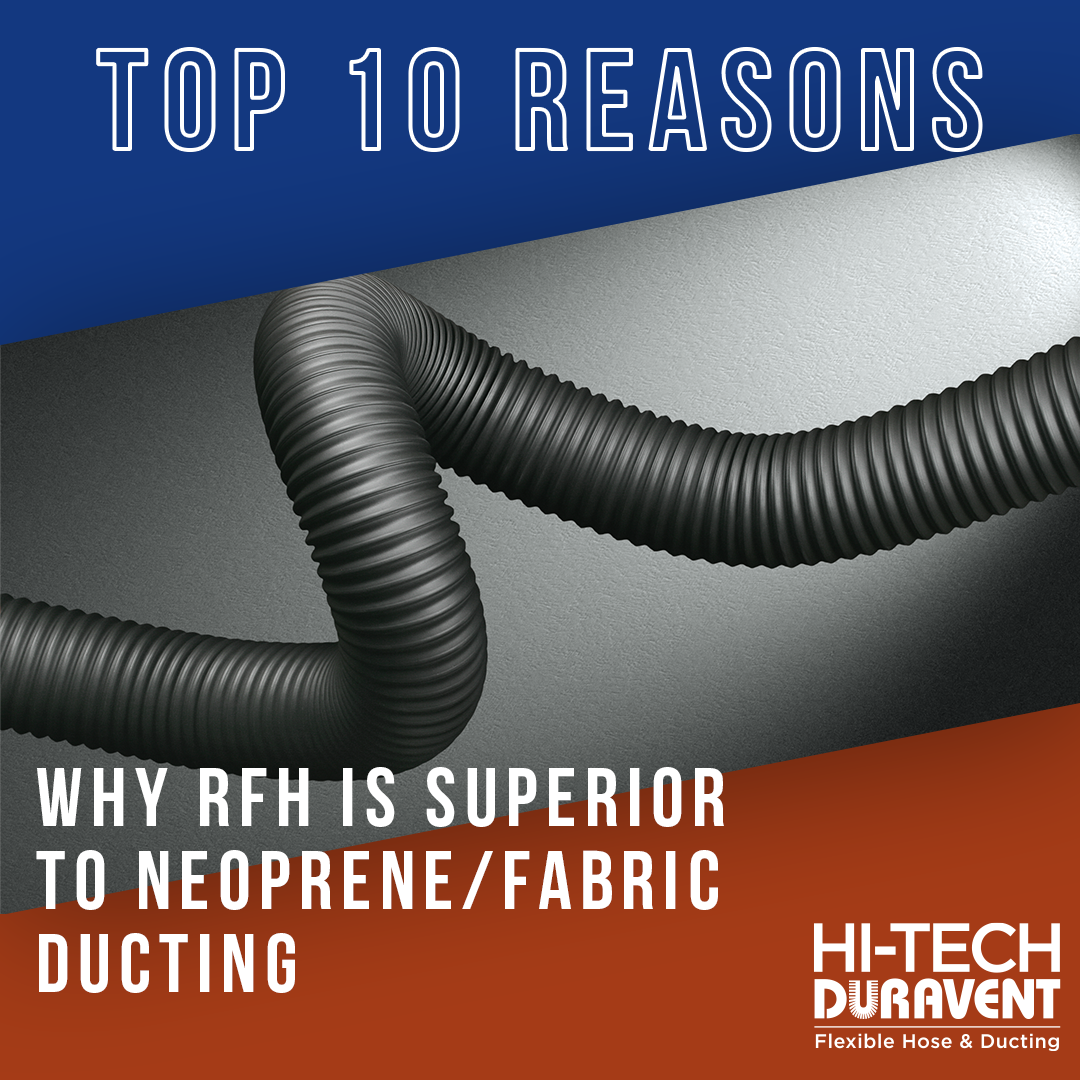
1. Wider Temperature Range
RFH can handle higher temperature than 2-ply neoprene/fabric ducting. RFH is rated from -60 to 275 F continuous, intermittent to 300 degrees. RFH Plus to 325 degrees.
2. Superior Chemical Resistance
RFH can handle MEK, Toluene, acetone, and sulfuric acid fumes.
3. No Cement
RFH is constructed without the use of cements, solvents, adhesives, glues or chemicals. High temperatures and chemicals can attack the glues used in fabric ducting.
4. Better Abrasion Resistance
RFH offers 2-3 times more abrasion resistance than all cloth products.
5. Better UV, Moisture & Weathering Resistance
RFH is thermoplastic rubber and does not age or absorb moisture like fabric ducting.
6. Flex Fatigue
Neoprene/fabric hose begins to flake off small bits of the neoprene coating when subjected to repeated flexing.
7. Airtight
RFH is extruded thermoplastic rubber and is airtight. Fabric ducting develops pin holes and is not airtight.
8. Versatile
Because RFH has better chemical resistance, better temperature range, better abrasive resistance, and better flex fatigue it can solve more applications. It allows you to stock fewer product types and reduces inventory requirements.
9. Special Colors
RFH is available in White, Blue, Yellow, Gray.
10. Wearstrip Available
RFH is available with a tough ridged high density polypropylene wearstrip that is molecularly bonded to the hose, not an additional layer of fabric glued on like fabric ducting.



